
Cropping with Photoshop tutorial
3 ways to crop objects
Adobe Photoshop can be used to edit and enhance digital images. One of the most common tasks in Photoshop is cropping objects. This means that you can remove an object from the background and place it on a transparent background, for example.
We will give you detailed step-by-step instructions on three ways of cropping objects in Photoshop and explain which procedure is the most suitable for which situation.
Selecting suitable cropping tools in Photoshop
The three tools "Magic Wand", "Colour Range Selection" and "Quick Selection" have different methods of selecting items and each have advantages in different situations. We are using Photoshop version 24.1.1. Some tools may not be available in older versions.
If the subject that you want to crop has a strong contrast to the background, then the Magic Wand tool is a good choice.
For photos with strong colour contrasts, the colour range selection works very well. Strictly speaking, this is not a Photoshop tool as it cannot be selected in the toolbar, but it is easy to use and is effective on simple images.
With the right amount of patience, you can achieve good results with the quick selection tool or the drawing pen, even with challenging images.
Magic wand tool - cropping with a uniform background
First open your image in Photoshop for cropping. In this example, we will be cutting out the yellow flower using the magic wand.

The Magic Wand tool is usually only suitable for cropping simple and uniform images. In our example, the flower is not uniformly yellow, but has different shades of yellow. This problem can be solved quite easily by using the Magic Wand tool several times.
Select the Magic Wand tool and hold down the "Shift" to re-apply the tool to the subject. This way you can use the Magic Wand to include several colour areas in the selection. This is the best way to select several colours or shades. So that you do not spend too much time selecting your subject, you should also make sure that the selection range of the tool is large enough.
Once you are satisfied with your selection, you can proceed to the next step. To do this, select the dialogue "Select and mask" in the header. The subject is then masked out and a window opens that allows you to refine your selection. For example, the edges can be rounded off, softened or adjusted afterwards.
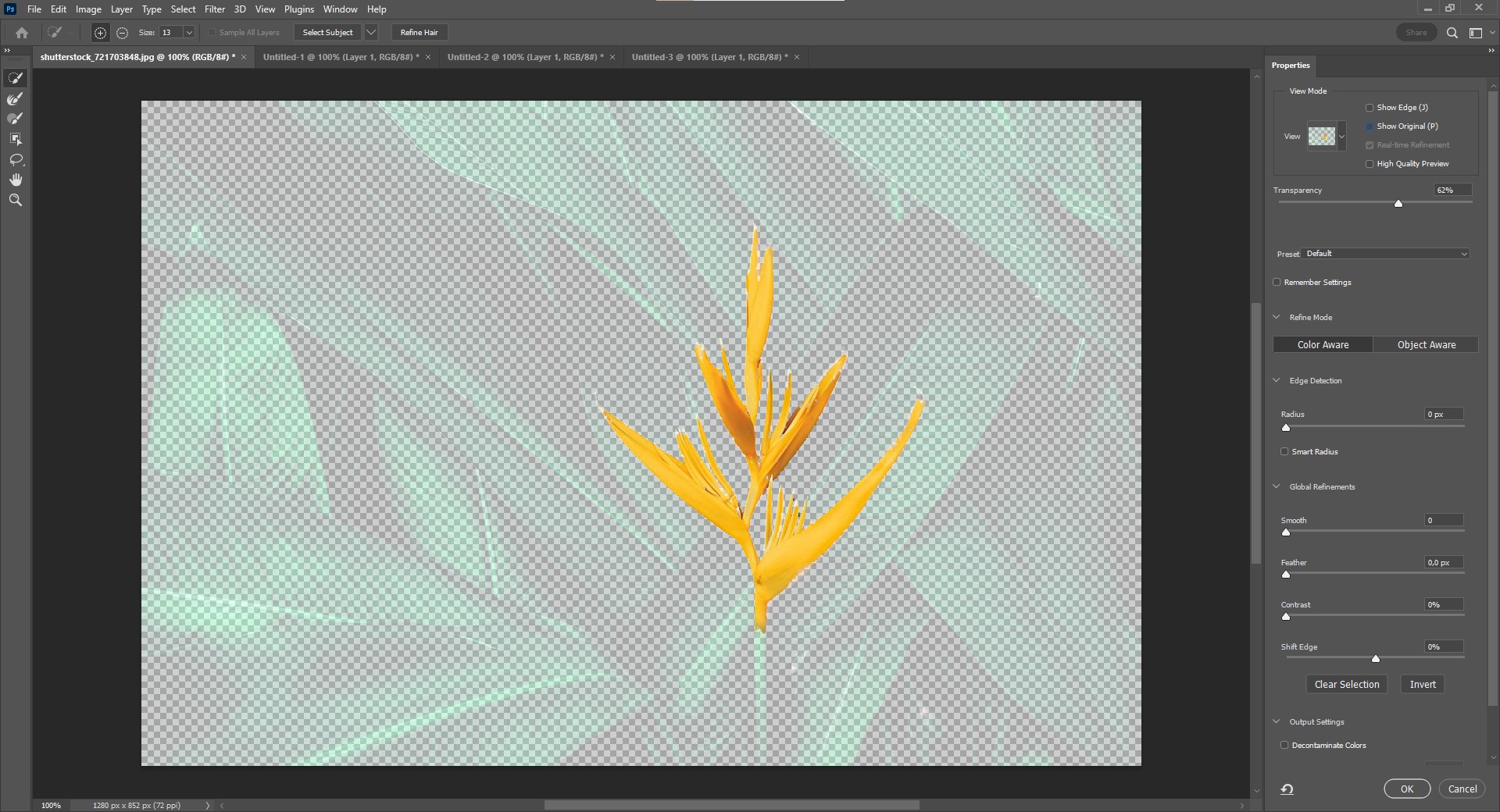
To refine your selection, select "Soft edge" as this will help the selection fit more naturally on a new background. To be able to copy your cropped object later and paste it into a new image, select the option "Output to new document" under "Output settings" in the right bar. Your object is now cropped and ready for the next stage.
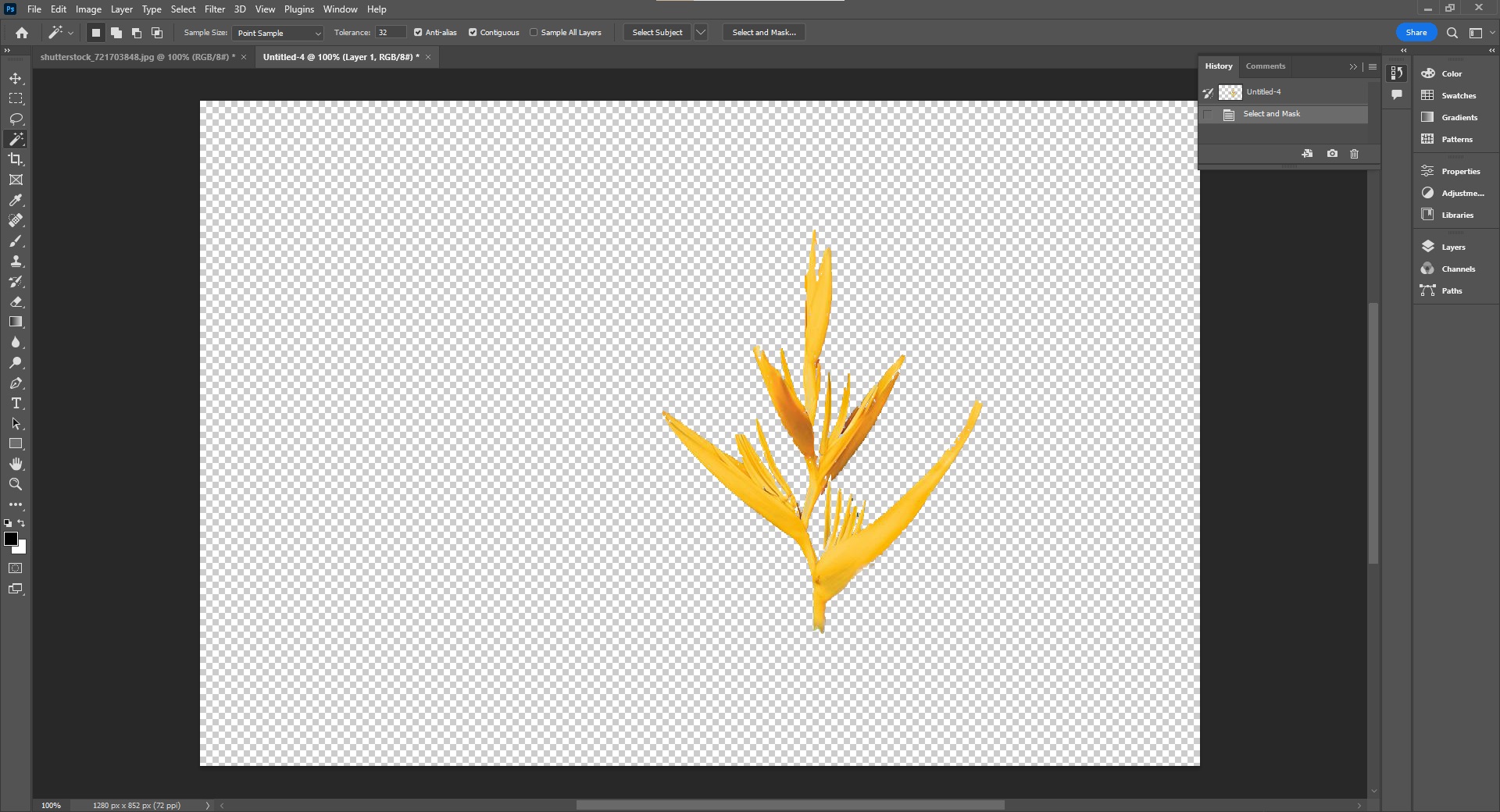
Colour range selection - cropping when the subject contrasts strongly with the background
Open a photo with large colour contrasts. Then select the menu item "Selection" and then "Colour Range".

Another window opens with the title Colour Range, where you can select your subject. In our example, this is the silhouette of the coffee cup. Since this area is uniformly black, a simple left click with the eyedropper is sufficient. To select several colour areas, hold down the "Shift" key while selecting multiple areas.
Depending on which area you select, the representation of the colour area window changes. The colour white stands for the selected area. Keep changing the value "Tolerance" until your subject appears completely white.
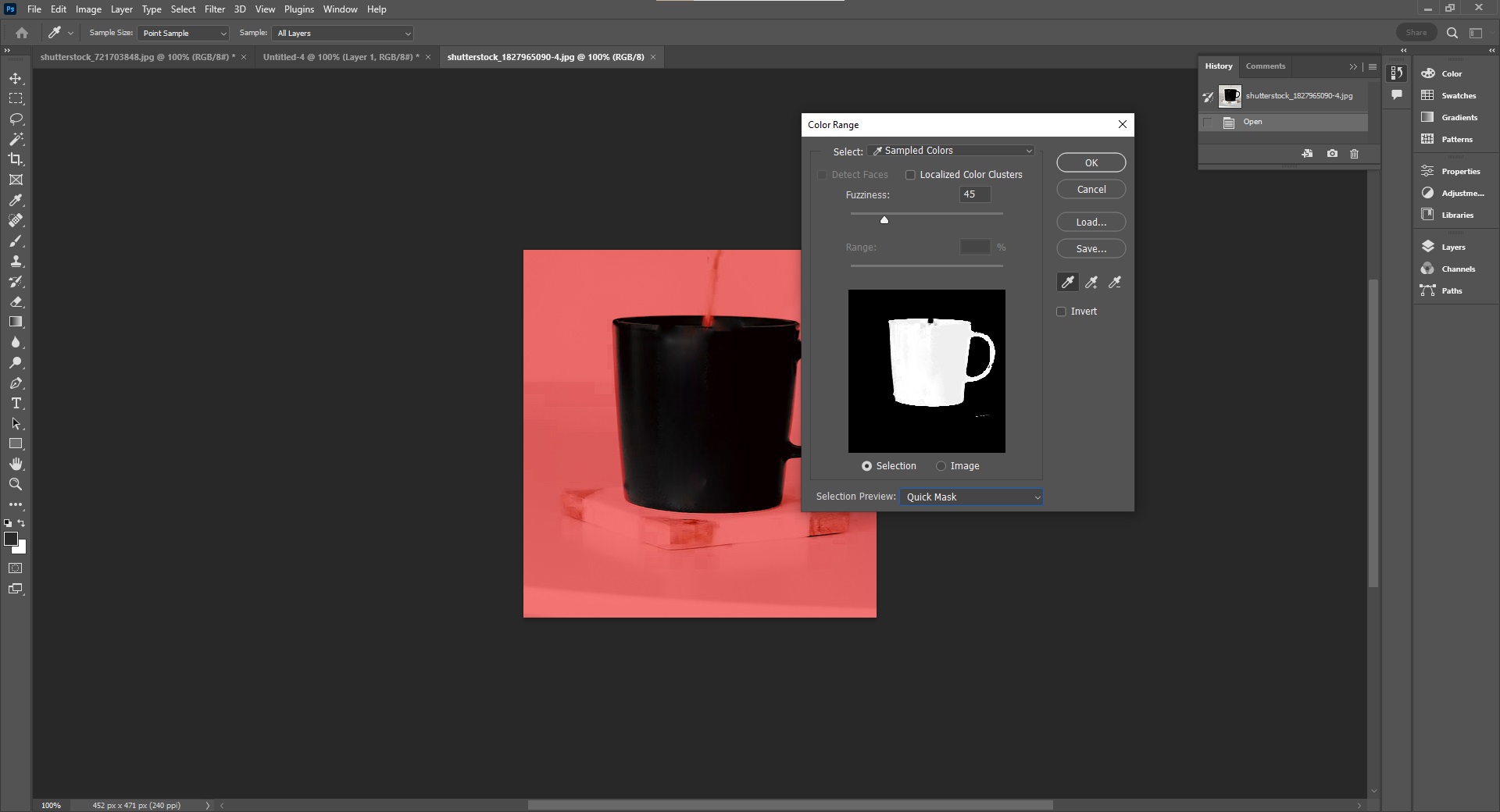
As soon as you have made your changes, confirm with OK and return to your selection. You can now copy and paste it into a new image.
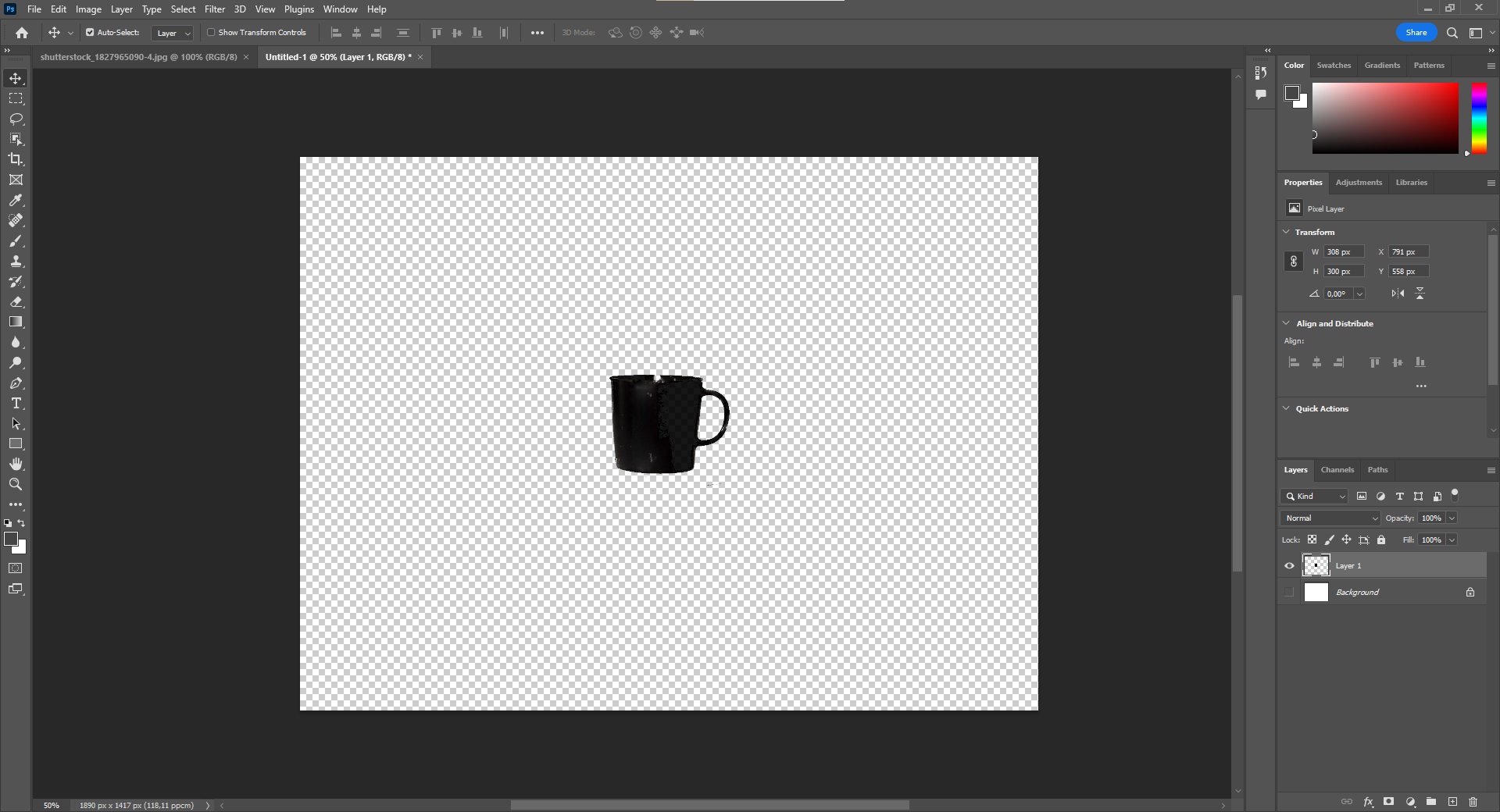
Quick selection tool - crop with more precision
Open your image in Photoshop and select the Quick Selection tool. Adjust the size of the tool to the components of your subject. Then, while holding down the mouse button, drag across your subject to select the area of the image that you want to crop later. Depending on the image, it may be helpful to select "Automatically enhance".
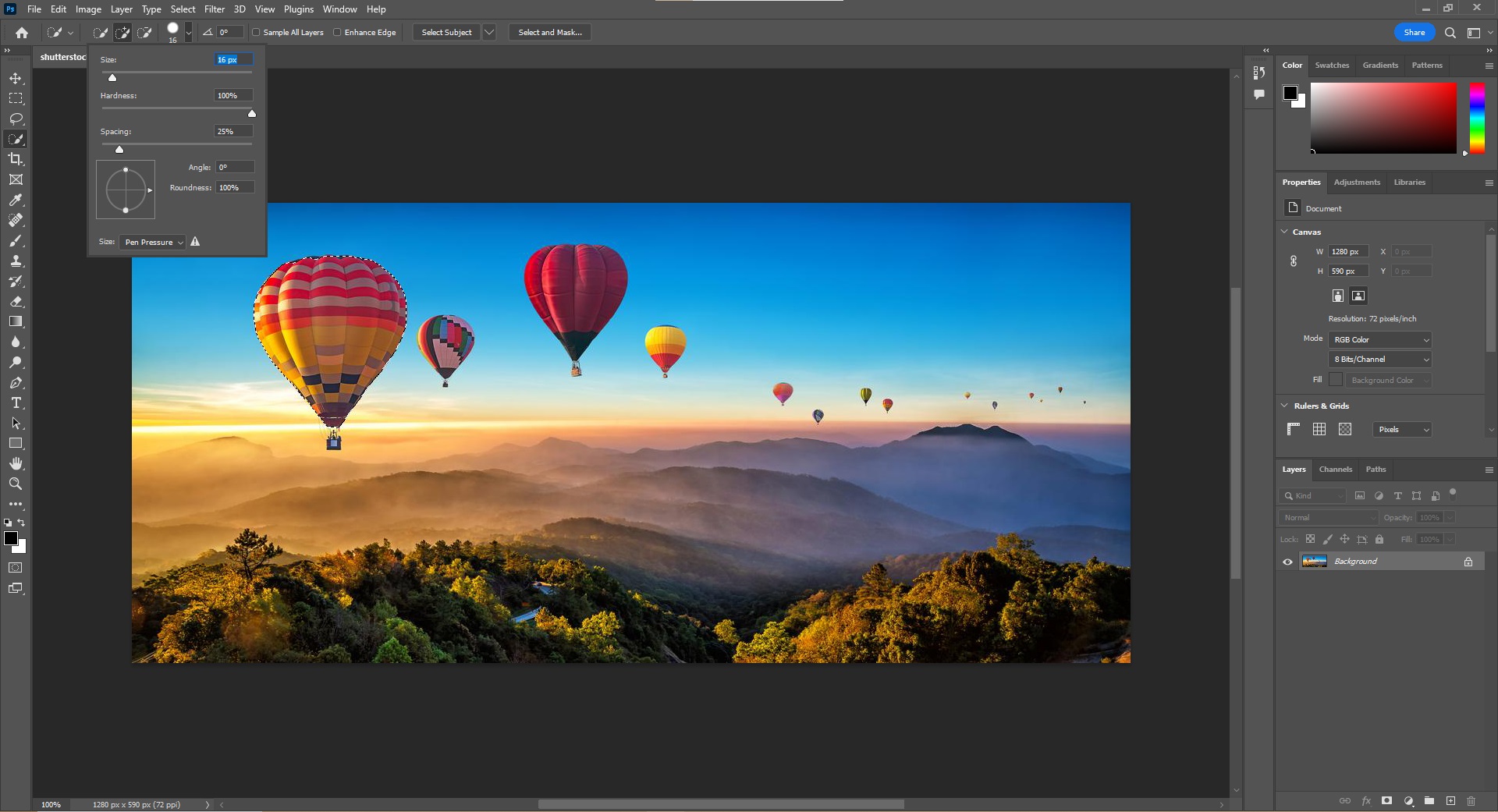
If your selection is too large and includes some of the background, simply delete part of your selection. To do this, hold down the "Alt" key and move the left mouse button over the area you want to delete from the selection. In our example image, we had to be particularly careful around the basket to capture all the details as best as possible. For this, we adjusted the size of the selection tool.
As in the previous methods, the edges of the quick selection tool can be refined afterwards. However, changes to subjects, such as the one in our example image, should be made with extreme caution. The options "Soft edge" or "Move edge" could lead to smaller parts of the picture being cut off.
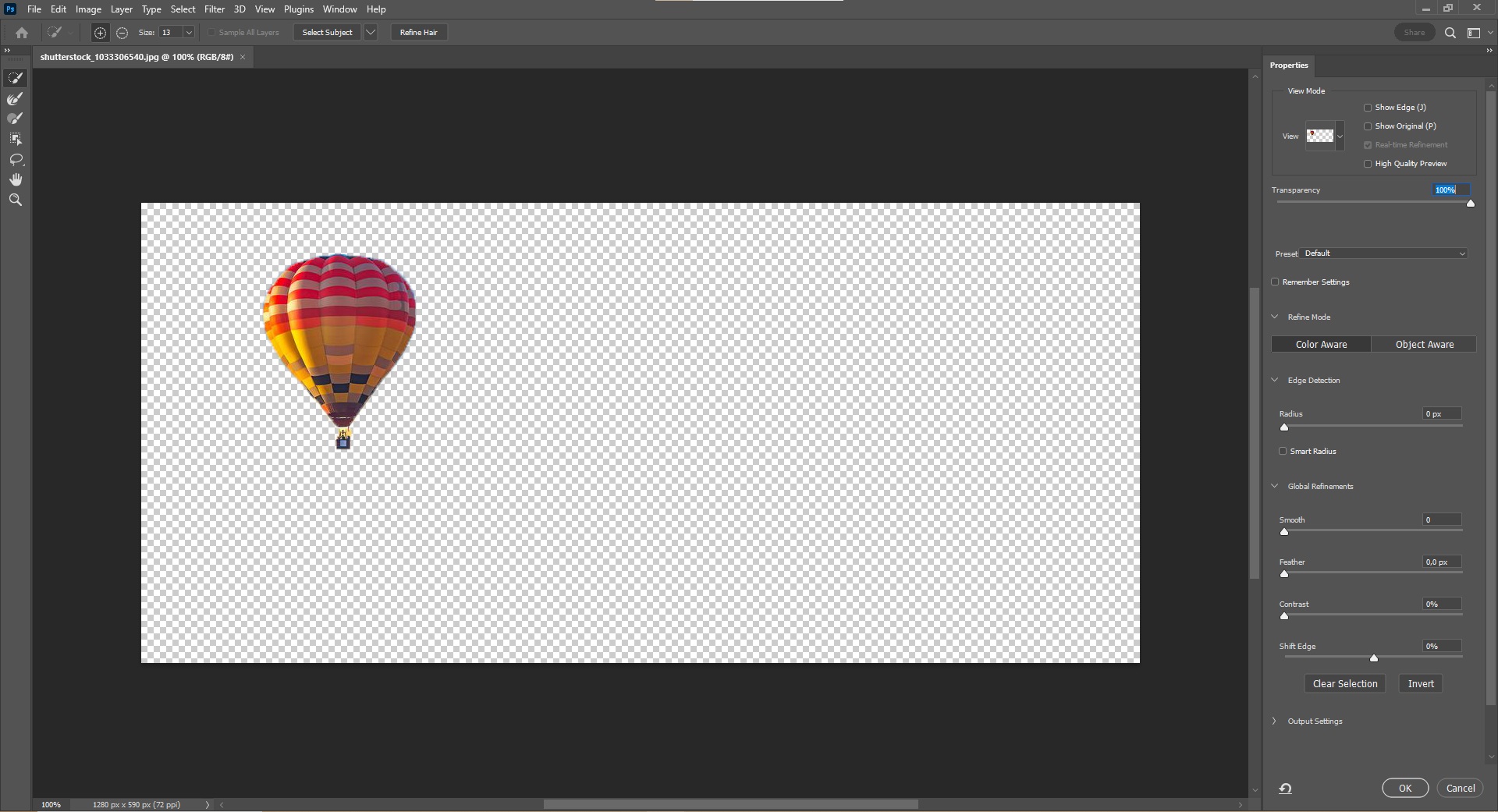
To prevent parts of the image from being cut off, moderate values should be selected for subjects as detailed as our example. Experiment with different values and carefully observe their effect. To be able to copy your cropped object later and paste it into a new image, select the ‘Output to new document’ under the item "Output settings" in the right bar. And your object cut out and ready for the next stage.
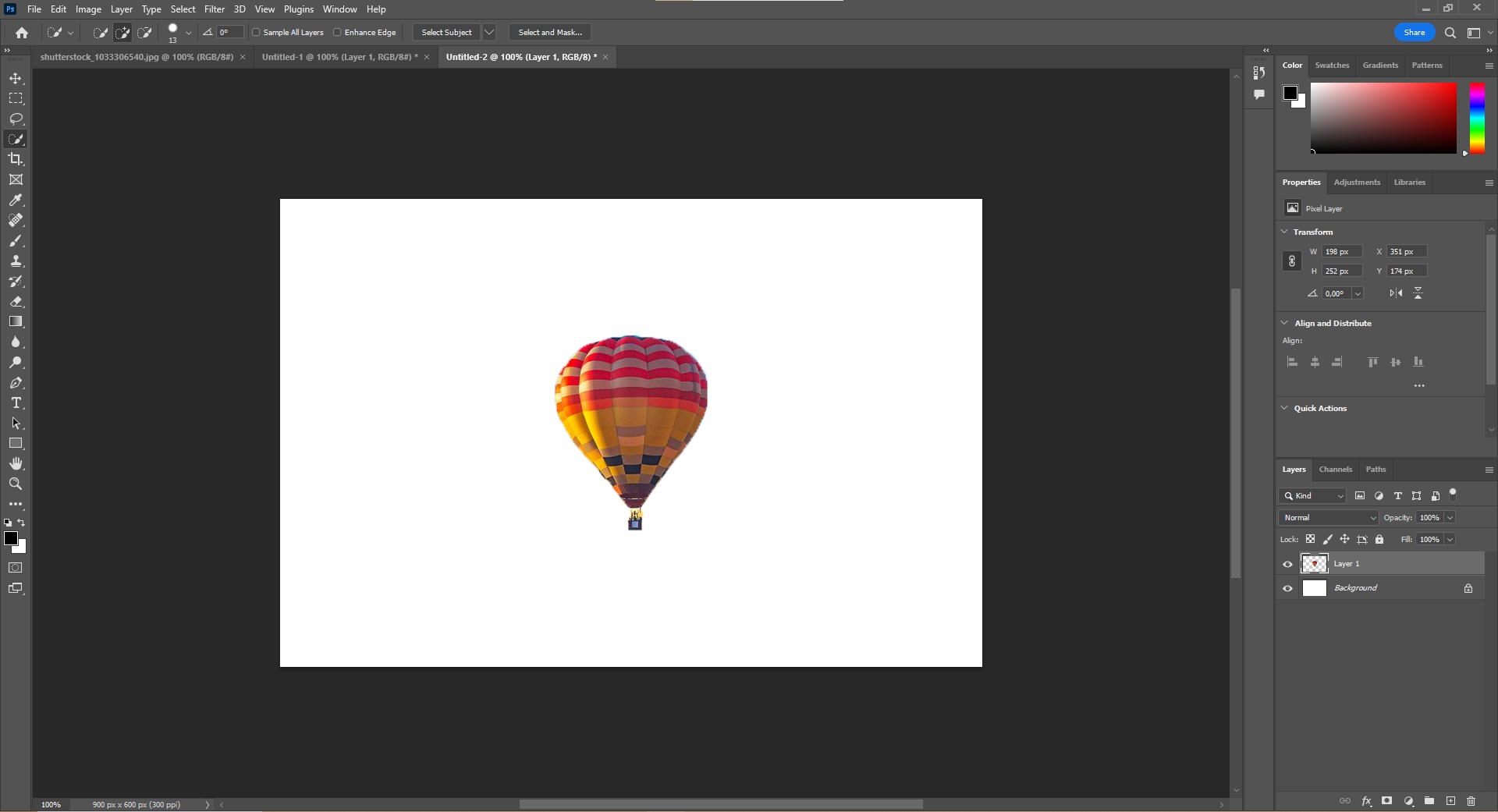
Tip
A more precise alternative to the quick selection tool is the drawing pen tool. Here the subject is selected step by step using individual strokes and curves. This method is time-consuming but can lead to very good results with patents and care.
Conclusion
In principle, several Photoshop tools are available for cutting out items in images. However, choosing the right tool can save a lot of time and effort. Consider which tool will be most useful for your situation and decide how precise you need the cropping to be. Corrections to the selection, such as edge enhancement, can be made afterwards. Patience and practice are two essential factors for successful cropping. For further use, you should save your cropped images in the file format PSD or PNG, as these will keep the transparency layer.
Learn more in our article on "Photoshop: Inserting image objects into new backgrounds", how you can combine your cropped images in a photo montage and what you need to bear in mind.
